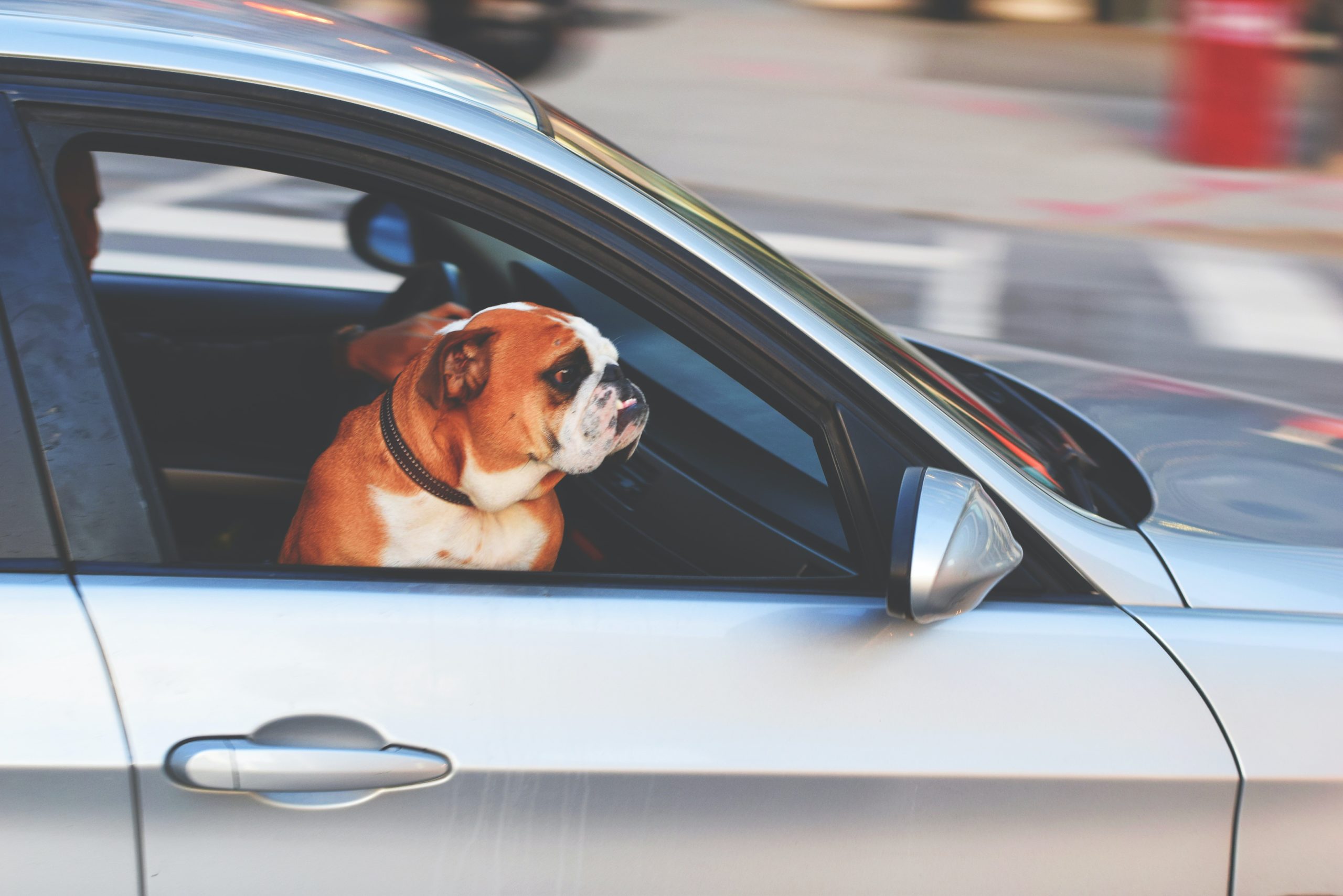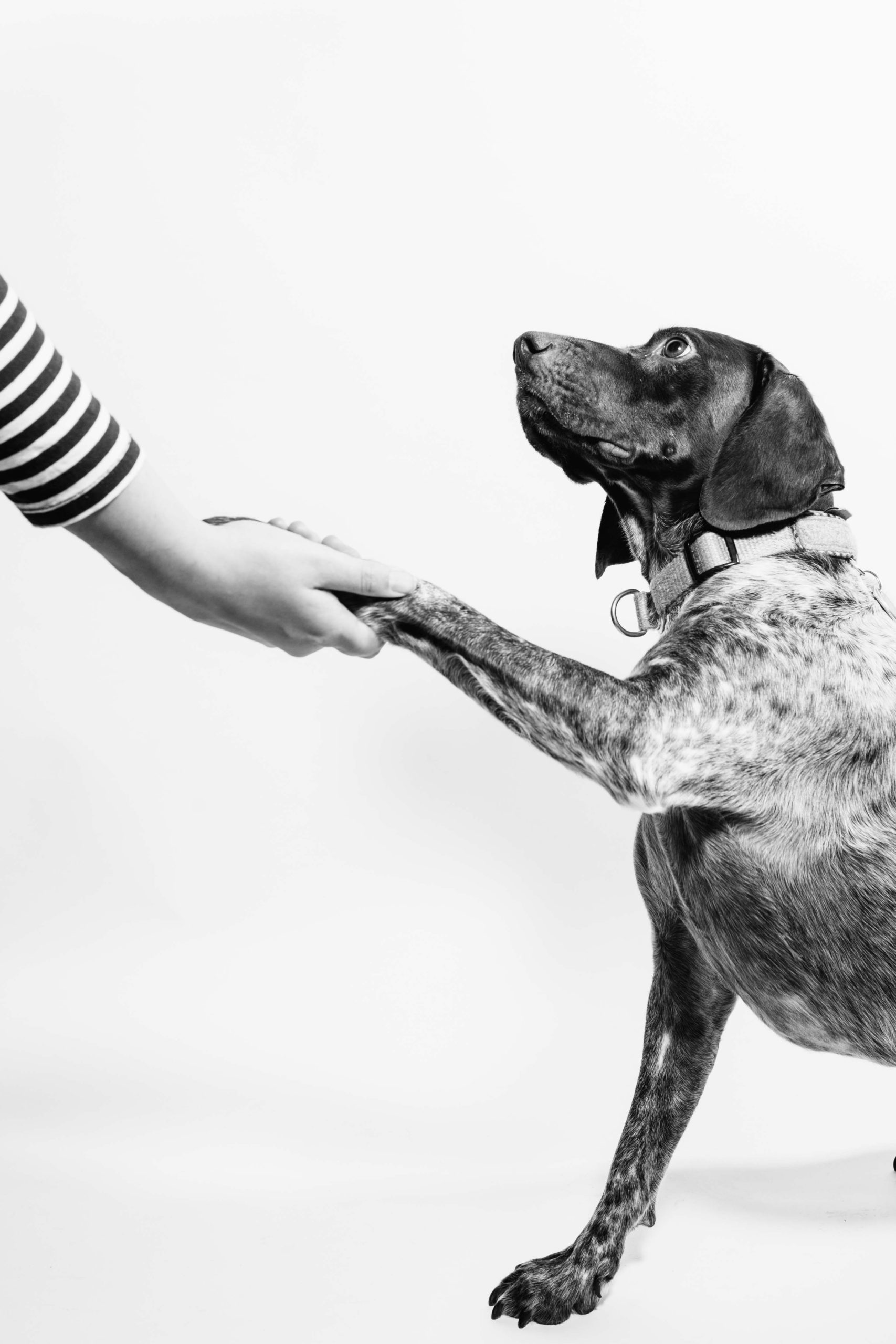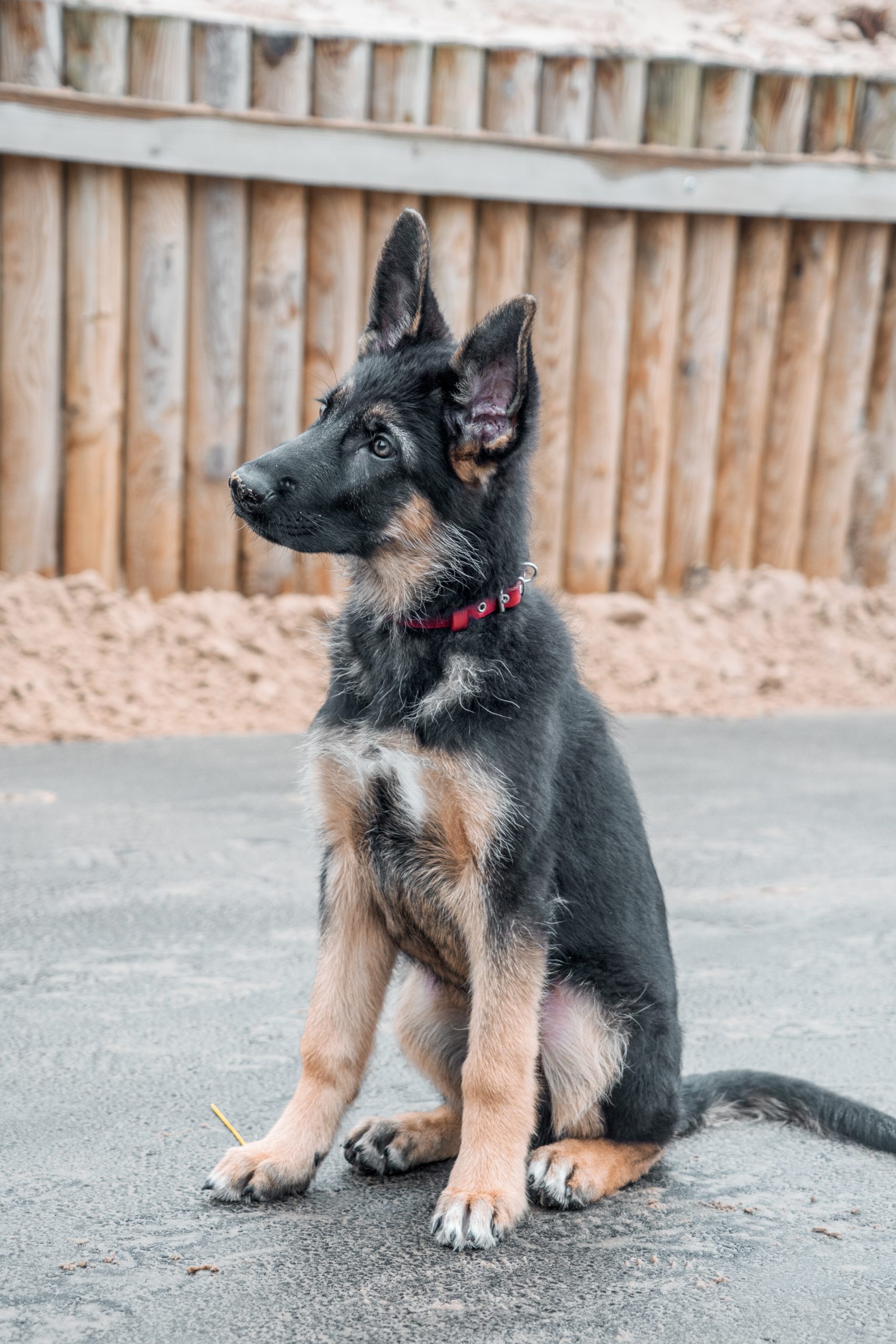Traveling with your furry companion can be an incredibly rewarding experience, opening up a world of adventures and memories to cherish.
As dog owners, we understand the importance of ensuring their safety and comfort during travel, as well as finding pet-friendly destinations that suit both our canine friends and ourselves.
In this blog post, you will discover essential tips on preparing for travel with your dog, navigating airline policies, choosing appropriate accommodations, and exploring some popular dog-friendly destinations.
Preparing Your Dog For Travel
Consult with a veterinarian for health certifications and ensure proper identification and documentation while choosing the right mode of transportation that suits your dog’s needs.
Consulting With Your Veterinarian For Health Certifications
Before embarking on a trip with your furry companion, it is essential to consult your veterinarian for health certifications. This important step ensures that your dog is fit to travel and adheres to the airline requirements or regulations of the destination country.
For instance, if you’re planning a European vacation with Fido by your side, obtaining a pet passport will be necessary. A vet can provide guidance on vaccination records for pets – such as rabies shots – along with other crucial information like the animal’s breed and weight.
Additionally, some countries have breed-specific legislation (BSL), meaning specific breeds could face restrictions or even outright bans.
Your veterinarian should also assess your dog’s overall wellbeing and potential anxiety during travel since certain breeds with “pushed-in” faces are more susceptible to risks when flying due to respiratory issues.
Choosing The Right Mode Of Transportation
It’s important to consider your dog’s size, temperament and needs when deciding on the mode of transportation for travel. If your dog is small enough to fit under the seat on an airplane, that may be a convenient option.
However, larger dogs may feel more comfortable traveling in a car or RV where they have space to move around. It’s also crucial to ensure that the chosen mode of transportation is pet-friendly and has necessary accommodations such as adequate air conditioning and ventilation.
Consider investing in a quality crate or carrier for road trips or flights, as this will keep your pup secure during transit.
Ensuring Proper Identification And Documentation
Pet identification and proper documentation are crucial when traveling with a dog. It is vital to ensure that your furry friend has proper identification, including tags on their collar with name, address, and phone number.
Additionally, it’s important to keep all relevant documentation handy during travel. This includes up-to-date vaccination records, health certificates or passports required for international travel, and any necessary medications or prescriptions.
Remember that rules and regulations regarding pet travel may vary depending on the destination and mode of transportation.
Checking For Pet-Friendly Accommodations
It is essential to ensure that the accommodations for your dog-friendly trip are pet-friendly. Many hotels and motels provide dog-friendly options, but it’s important to do your research ahead of time.
Some hotels might have breed or size restrictions, and some may even require an additional deposit or fee for pets.
One option for finding suitable accommodation could be using pet-friendly travel sites like BringFido.com or GoPetFriendly.com; they list thousands of businesses catered towards traveling with pets.
Another good idea would be to call the prospective hotel directly before booking a room to find out their specific requirements and policies regarding dogs on their premises.
Tips For Traveling With Your Dog
Pack essential items for your dog, secure them while in transit, and take regular breaks for exercise.
Packing Essentials For Your Dog
To ensure a smooth and comfortable journey for your furry friend, it is important to pack the following essentials when traveling with your dog:
- Enough food and water for the entire trip, as it may not be readily available along the way.
- Collapsible bowls for food and water that are easy to pack and clean.
- Treats to reward good behavior or calm anxiety during travel.
- Health records, including vaccination records and health certificates required by airlines or other modes of transportation.
- Medications, if needed, along with any necessary equipment, such as syringes or pill organizers.
- A comfortable bed or blanket to give your dog a cozy place to rest during travel.
- Toys or familiar objects can provide comfort and prevent boredom during long trips.
- Leashes, collars, and harnesses to keep your dog secure while in transit or exploring new destinations.
- Waste bags and cleaning supplies for accidents or bathroom breaks along the way.
- First aid kit with basic supplies such as gauze pads, bandages, antiseptic wipes, and tweezers.
Remember that packing for your dog should not only prioritize their comfort but also promote their safety and well-being while on the go!
Securing Your Dog While In Transit
It is crucial to secure your dog while traveling, ensuring its safety throughout the journey. When traveling by car, dogs should be restrained in a crate that is anchored using a seat belt or other means.
Loose dogs can distract drivers and cause accidents.
When flying with a dog, it is essential to ensure they are secured in an airline-approved carrier that meets size restrictions and ventilation requirements.
The carrier must also be securely fastened so that it does not move during turbulence or sudden movements during transit.
Securing your dog while in transit will keep them safe throughout your journey and help reduce anxiety associated with travel for both you and your pet.
Providing Adequate Food And Water
It is important to ensure that your dog has access to clean water and adequate food while traveling. Always pack enough food for the entire trip, plus extra just in case of unforeseen circumstances or delays.
For longer trips, research pet-friendly restaurants and cafes along your route where you can take breaks and grab a bite to eat with your furry companion.
Remember that changes in diet can upset a dog’s stomach, causing diarrhea or vomiting, which can be especially uncomfortable for them while on the road.
Taking Regular Breaks For Exercise And Bathroom Breaks
It is essential to remember that dogs need frequent breaks for exercise and bathroom breaks during travel to prevent discomfort and accidents. Here are some tips to keep in mind:
- Plan ahead: Check for pet-friendly rest stops or parks along your route before you begin your journey. This way, you can stop at regular intervals to let your dog stretch their legs.
- Bring water and snacks: It’s important to keep your dog hydrated, so always bring a sufficient amount of water and snacks for them. Avoid feeding your dog a heavy meal just before traveling as this can lead to motion sickness.
- Take short walks: During breaks, take short walks with your dog to give them exercise, stimulate their mind, and provide enough opportunities for them to relieve themselves. This can help reduce anxiety and restlessness.
- Use a leash or harness: To ensure the safety of your dog during breaks, it’s crucial to use a leash or harness when walking them outside. Keep an eye on them at all times and avoid letting them wander too far away from you.
- Clean up after your dog: Be sure to bring waste bags with you and dispose of any waste in designated trash cans. Leaving pet waste behind can result in hefty fines.
By following these tips, you can make traveling with your dog a comfortable and enjoyable experience. Remember that dogs have different needs from humans during travel, so it’s essential to plan ahead for their comfort and safety needs.
Researching Local Pet Policies And Regulations
Before traveling with your furry friend, it is crucial to research local pet policies and regulations. This includes knowing which public places are pet-friendly, like parks or beaches, and which ones prohibit dogs altogether.
Additionally, some cities have strict leash laws that require all dogs to be on a leash at all times while in public spaces.
It’s equally vital to remember the vaccination requirements for each state as you drive from place to place, as these can vary depending on location. In many cases, proof of vaccinations will need to accompany you on your travels such as rabies inoculation records or other health certificates indicating your dog has been vaccinated against ticks and fleas.
Flying With Your Dog
Know the airline’s policies and fees for flying with a pet. Booking a direct flight is ideal, and choosing a well-ventilated carrier that meets airline regulations is crucial.
Knowing The Airline’s Policies And Fees
It is important to research the specific airline’s policies and fees when flying with your dog. Each airline has its own set of rules and regulations regarding pets, and fees can vary based on factors like the size and weight of your dog, as well as whether they will be traveling in the cabin or cargo hold.
For example, Delta Airlines charges a non-refundable fee for pets traveling in the cabin but does not allow certain breeds such as Pit Bulls or Fighting Dogs. United Airlines allows larger dogs to travel in cargo but charges different fees depending on the destination.
Understanding these policies before booking your flight can help you avoid any surprises or issues during your trip.
Overall, taking time to research airline policies and fees beforehand helps ensure a smoother journey for both you and your furry friend.
Booking A Direct Flight If Possible
If you’re planning on flying with your dog, it’s recommended to book a direct flight whenever possible. This reduces the time spent in transit and minimizes the risk of lost or delayed baggage.
Direct flights also reduce the likelihood of separation anxiety for both you and your furry companion. When booking a flight, be sure to check with the airline regarding their pet policy, fees, restrictions, and requirements.
According to recent statistics from industry insiders, dogs are the most common pets traveling by air worldwide; therefore, it is essential to prioritize their comfort and safety when making travel arrangements.
Choosing A Well-Ventilated Carrier That Meets Airline Regulations
It’s crucial to pick a well-ventilated carrier that meets airline regulations when flying with your dog. Airlines have strict guidelines on pet carriers, so it’s important to do research and ensure that the chosen carrier is suitable for both the airline and your furry friend.
The carrier must be big enough for your dog to stand up, move around comfortably, and lie down in a natural position. It also needs proper ventilation to keep your pet comfortable during flights.
According to recent studies on pets traveling by air, smaller dogs tend to fare better in cabin travel because they’re allowed under seats as carry-ons using soft-sided bags approved by the airlines like Sherpa Bag or Sleepypod Atom Carrier- available onlinefrom retailers such as Chewy.com ($30-$70).
However, larger breeds may require hard crates; these crates are exceptionally secure but less breathable than their fabric counterparts.
Preparing Your Dog For The Flight With Positive Associations And Training
It’s essential to prepare your dog mentally and physically for a flight. Positive training is key here, ensuring that your furry friend has the best possible experience during their journey.
One tip is to use treats and rewards when introducing your dog to their carrier, establishing positive associations with the space. Training sessions can involve placing them inside the carrier and leaving for gradually longer periods until they become comfortable being confined.
Dog-Friendly Travel Destinations
Explore pet-friendly national parks and hiking trails, dog-friendly beaches and lakes, as well as accommodations that permit dogs along the way.
National Parks And Hiking Trails
If you enjoy outdoor activities and hiking, then traveling to national parks with your dog could be your next adventure. Here are some tips to make the most of your trip:
- Research the park’s regulations on pets before visiting. Some parks may have certain trails or areas where dogs are not allowed.
- Pack enough water and snacks for both you and your dog, as not all parks have available resources.
- Make sure to bring a leash that is no longer than six feet long and keep your dog secured at all times while on the trail.
- Bring a first aid kit for both you and your dog in case of any injuries or accidents on the trail.
- Remember to clean up after your dog by using waste bags and disposing of them properly.
- Keep in mind that some wildlife may be present in the park, so it is essential to keep your dog under control.
National Parks offer countless opportunities for exploring nature’s beauty with your furry friend. However, it is important to follow park regulations to ensure safety for everyone.
With proper preparation and following rules, you can create unforgettable memories with man’s best friend while discovering natural treasures.
Beaches And Lakes
Some of the best travel destinations for dogs are beaches and lakes. Here are some things to keep in mind when taking your furry friend to these locations:
- Check for pet-friendly beaches and lakes before planning your trip. Not all bodies of water welcome pets, and some may have restrictions or leash laws.
- Pack dog-friendly essentials such as towels, water bowls, sunscreen, and toys that will make the trip more enjoyable.
- Keep your dog leashed at all times unless it is a designated off-leash area.
- Clean up after your dog by bringing baggies or using ones provided by the beach or lake.
- Avoid letting your dog drink saltwater from oceans or lakes as it can lead to dehydration and other health issues.
- Be mindful of weather conditions such as heatstroke warnings during summer months while bringing an umbrella for shade.
- Keep an eye on your pet’s behavior; they might not tolerate being outdoors for too long periods under bright sunlight or in chilly conditions.
No matter where you choose to travel with your dog, always check local pet policies beforehand, stay aware of their needs and comfort level during travels, and ensure proper identification documentation is ready for any unlikely eventuality that may arise during the journey.
Pet-Friendly Hotels And Accommodations
Traveling with a dog means finding accommodations that welcome furry companions. Here are some tips for finding pet-friendly hotels and accommodations:
- Research online: Use travel websites or search engines that allow you to filter results by pet-friendly options.
- Call ahead: Call the hotel directly to confirm their pet policy and availability of dog-friendly rooms.
- Check for fees: Some hotels may charge a fee for pets, so make sure to inquire about any additional costs.
- Bring necessary supplies: Be prepared with supplies such as a bowl, bed, and toys for your dog’s comfort during the stay.
- Respect the rules: Follow the hotel’s guidelines on where dogs are allowed in the hotel and on the property.
- Clean up after your dog: Always clean up after your dog to be respectful of other guests and maintain cleanliness in common areas.
- Consider alternative options: If a hotel does not accept pets, consider other options such as renting a pet-friendly vacation home or using a pet-sitting service during your trip.
Remember that not all hotels are pet-friendly, so it’s essential to plan ahead and research accommodations that will allow your furry friend to join in on the adventure!
Finding Dog-Friendly Activities And Attractions
Traveling with your dog doesn’t mean you have to limit your activities. With the increasing trend in pet-friendly tourism, there are plenty of options for owners who want to explore with their furry friends. Here are some tips on finding dog-friendly activities and attractions:
- Research ahead of time – search online for dog-friendly parks, beaches, hiking trails, and other attractions in the area you plan to visit.
- Ask locals – consult with the hotel staff or locals about dog-friendly places to go based on their personal experience.
- Check social media – use hashtags like #dogfriendlytravel or #dogsofinstagram to discover popular destinations where pets are welcome.
- Look for restaurants and cafes that allow dogs – many food establishments offer outdoor seating where dogs are allowed, enabling owners to enjoy a meal without leaving their pets behind.
- Visit pet-specific locations – spend a day at a local dog park or take your pooch to a pet store where they can interact with other animals.
- Attend pet-related events – look for local events like dog shows or animal fundraisers that you can attend with your furry friend.
Remember always to bring essential items such as water bowls, waste bags, and treats for your pet when going out together. With careful planning and research, both you and your canine companion can experience plenty of fun-filled adventures while traveling!
Conclusion
Traveling with your furry friend can be a fun and rewarding experience for both you and your dog. By properly preparing for travel, choosing the right mode of transportation, packing essential items, securing your pet while in transit, and researching local pet policies and regulations before departing.
Whether it’s taking a road trip or flying to new destinations, traveling with dogs is an adventure that creates unforgettable memories. Remember to prioritize safety above all else when considering different modes of transportation for your pup.
FAQs:
1. What should I pack when traveling with my dog?
When traveling with your dog, it’s important to bring essentials such as their food and water bowls, a leash and collar, any necessary medications or supplements, waste bags, and a comfortable bed or blanket for them to sleep on.
2. Can I bring my dog on an airplane?
It is possible to travel with your dog by airplane but each airline has specific regulations regarding pet travel. This may include restrictions on breeds or sizes of dogs allowed in the cabin versus cargo hold or additional fees for bringing pets onboard. It’s important to research airline policies beforehand and ensure that your pet meets all requirements before booking tickets.
3. How can I keep my dog calm during long car rides?
To help keep your furry friend calm during long car rides you can try providing familiar toys or blankets for comfort, taking frequent breaks to let them stretch their legs while also getting exercise (such as short walks at rest stops), playing calming music in the vehicle, using natural remedies like essential oils sprays/sprinkles that are designed specifically around soothing anxious animals.
4. Are there any safety tips I should follow when traveling with my dog?
Safety precautions include keeping dogs secured inside vehicles by utilizing crates, hammocks/seat covers that attach securely so they cannot move freely within the cabin causing distractions/dangerous situations not only for themselves but also everyone inside the vehicle that could be hurt if accidents occur due to lack proper securing measures implemented prior departure date/time. Additionally, always carry extra food & water supplies along the route planning out stops ahead beforehand — this way nothing unexpected occurs without sufficient preparation taken into account prior to making necessary arrangements accordingly.



